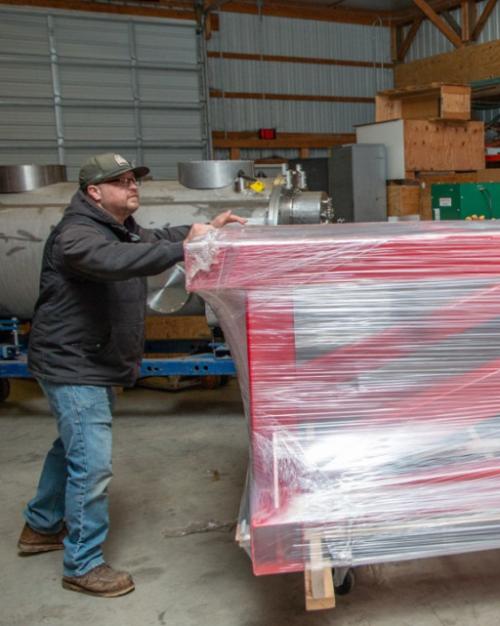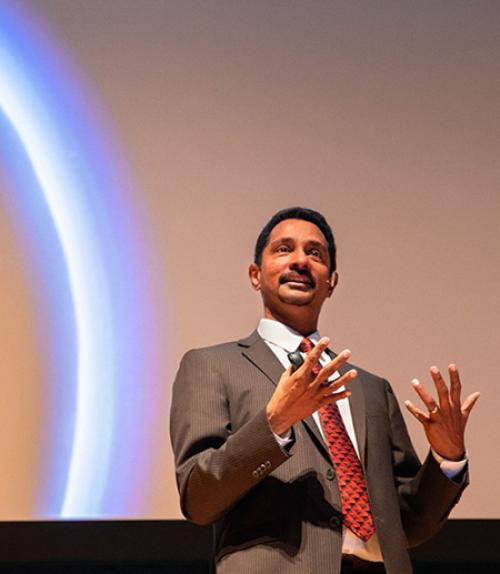Ray Jayawardhana, the Harold Tanner Dean of Arts and Sciences and professor of astronomy, drew upon multiple disciplines and his own far-flung explorations to educate and inspire approximately 1,000 K-12 teachers at the National Math and Science Initiative (NMSI) Summer Series conference.
Held virtually July 13-24, the online conference featured several guest speakers, including former NASA astronauts Bernard Harris and Mike Massimino; actress (“The Wonder Years”) and science writer Danica McKellar; and scientist and entrepreneur Calvin Mackie.
Jayawardhana said the goal of his keynote, delivered July 17, was to show the teachers how the at-times esoteric subject matter of astronomy “is not only relevant but integral to our lives.”
To do so, he expanded on the central themes of his new children’s book, “Child of the Universe,” which highlights humanity’s intimate connections with the universe and encourages kids to imagine their own place in it as one of grand possibility and adventure.
Jayawardhana shared his personal experiences and photos – of a solar eclipse chase in Mongolia, a meteorite collecting expedition in Antarctica and aurora sightings in the Arctic. He also drew upon examples in history, such as the Carrington event of 1859, which remains the strongest solar storm on record, producing three days of intense aurorae and affecting telegraph lines worldwide.
“It brought down the Victorian version of the internet,” Jayawardhana said, “and may have reduced the Earth’s ozone cover by 5% for several years.”
A solar storm of that magnitude would have an even greater impact today, he said, disrupting GPS systems and aviation and shutting down large portions of the power grid by overloading transformers.
He said our biology, too, is closely connected to the universe.
“The calcium in our bones, the iron in our blood and the oxygen we breathe,” he said, “all come from ancient stars that lived and died before our own sun came to be.”
And according to recent research, he said, a third or more of the water on Earth may predate the birth of the sun.
“It means that each time you take a sip of water, you are swallowing molecules older than the sun itself,” he said. “These molecules assembled on the surface of tiny dust grains in the chilly confines of a gigantic gas cloud. That cloud spawned our sun and the planets that orbit it – and somehow those ancient water molecules survived the perils of the planetary birth process to end up in our oceans and our bodies. We owe our lifeblood to cosmic processes that occurred billions of years ago.”
Jayawardhana also told the teachers about new research that has identified thousands of alien worlds, including a handful that could, in principle, support life.
“We’re even able to do remote sensing across tens of light-years to measure the characteristics of some nearby worlds,” he added, referring to work in his own research group. “The new exoplanet discoveries are beginning to provide a true measure of our place in the cosmos.”
He also encouraged his audience – teachers who were at the conference to learn how best to enrich the lives of their students and support their aspirations. “You play a critical role in engaging and educating future generations in math and science,” Jayawardhana said. “Thank you for all that you do.”
Launched in 2007, the NMSI aims to improve student access and achievement in math, science, computer science, English and other disciplines by enhancing the training and professional development of teachers across the country.
Read the story in the Cornell Chronicle.




